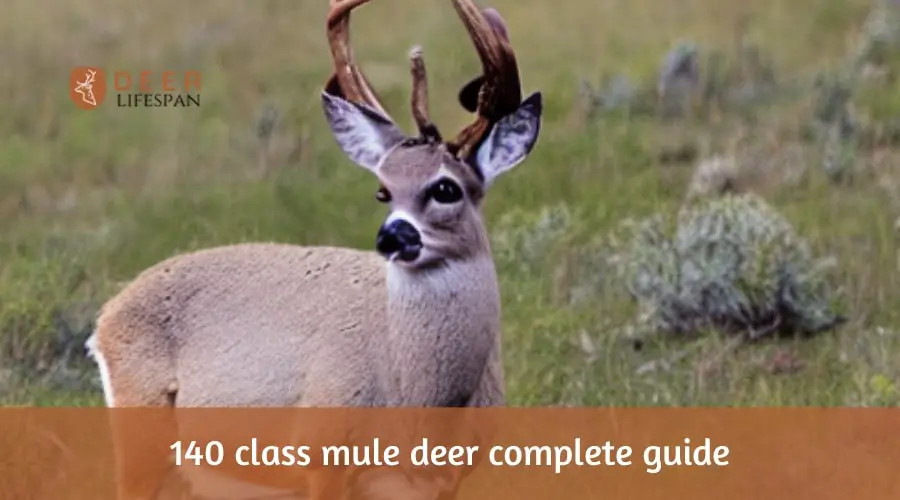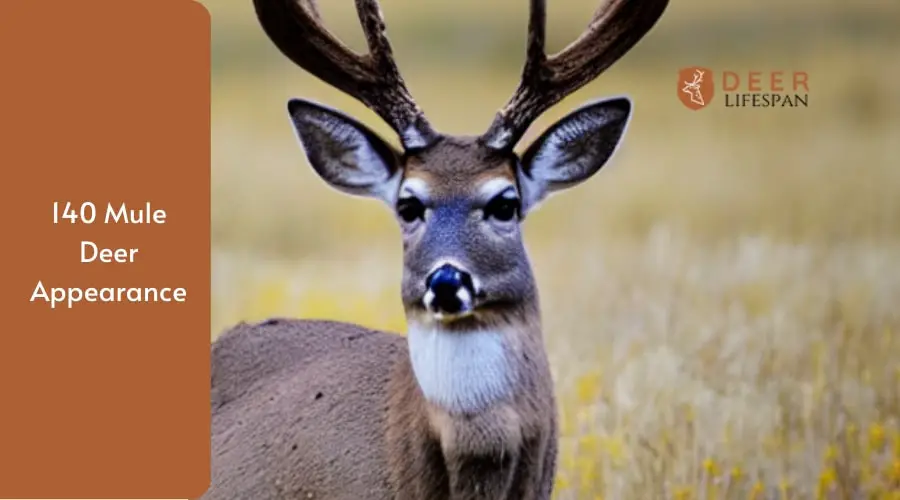How to determine 140 class mule deer from appearance is one of the asked questions among hunters and owners. Deers are of adorable species with different ranges of antlers.
You can define deer mules by looking at them if you measure them accurately. Also, some other factors should be considered, such as their size, diet, appearance, and many more. You must calculate precisely, as wrong measurements can lead to a false conclusion. However, male bucks use their antler to attract mating.
This article mentions 140 class mule deer details and their diet according to the seasons. Keep reading to know more.
Table of Contents
140 class mule deer complete guide

The fundamental reason for 140 class mules or more is that male deer require them for defense, fighting, and intra-specific combat to win female buck’s attention for mating as they prefer large antlers male deers compared to small antlers.
Bucks Diet Plan
Tags are selective about their food to survive and grow mules. So, they prefer mostly nutritious food over large quantities of low forage or nutrients. And that’s why their diets transfer season to season.
Nevertheless, bucks have a sensitive digestive system, so they don’t switch abruptly from one season’s diet to another. Changing the diet of the 140-class mule deer can lead to indigestion problems, malnourishment, or death.
- Spring
Tags prefer to intake grasses, flowering plants, and leaves to bulk their required nutrients. Springtime is when plants grow, so deer would travel far enough to find the right amount of nutrients plants to eat.
- Summer
In the summer season, the 140 mule deer embark on eating vegetation gradually but still prefer to intake grass and forbs such as dandelion, bluebell, sawtooth butterweed, cloves, and many more.
Although they depend on a broad-leafed vegetation diet in summer, they switch to shrubs in late summer.
- Winter
Mostly in winter, the plants and vegetation are covered in snow, so deer feed brows, a twig, or leaf of shrub trees—for instance, sagebrush, mountain mahogany, rabbitbrush, etc.
140 Mule Deer Appearance

You can determine that the deer has 140 mules from appearance. You must consider multiple facts when hunting for a farm owner.
You can take a great look at the horns of deer to see if it contains good mass and detect 140 or more higher-class bucks. Most probably, the mules are ten inches away from their ears, meaning it is 140 class bucks.
However, in some cases, deer might have outside the ears approximately eight points with good height and mass. And, detecting whitetail bucks 140 class considers a big one if it’s eight points, 140 mule class.
140 Class Buck Size
This is challenging to understand as most people have their opinions, and it can confuse everyone, including professional farmers and hunters. But, research reports that three and a half to four inches in size can be considered 140 mule deer.
However, it depends on the circumference measurement to determine short eye sizes, which is a fact. That measurement of the eye must be around three to four inches to define 140 mule buck. And if you detect that it is short, then it means that the size of the buck is three inches or close.
Whitetail deer with 140
You can determine whether the deer is a whitetail deer with 140 mules. This is similar to the scoring method; you can select the deers from their antlers and goof mass accordingly. You must measure an ear-to-ear tip around thirteen to fifteen inches more than it’s a 140-class whitetail deer.
Therefore, some of the whitetails appear huge and put you in a dilemma if it’s 140 class or not. Don’t stress; if you can get through with the proper measuring method, you can conclude if it is a 140-class buck.
Mule Buck Score
Hunters might be looking for a big score as a beginner’s 90 to 100 score is enough, rather than a professional’s desire to score higher. So the antlers can define the 140 deer mule easily.
These deer are giant, and you can score 140 if you aim for 120 inches in the B&C system. You only have to measure the antlers, but if you miss judging it, you may score less than you think.
Bottom Line
Most male deer species have antlers, but Rangifer is the only kind in which both male and female deers have mules. However, you can farm deer in your area by planting sufficient trees from where they can get nutrients.
If you are a hunter, you first must acknowledge if you are allowed to hunt, as most countries don’t allow you to hunt deer during mating seasons.
